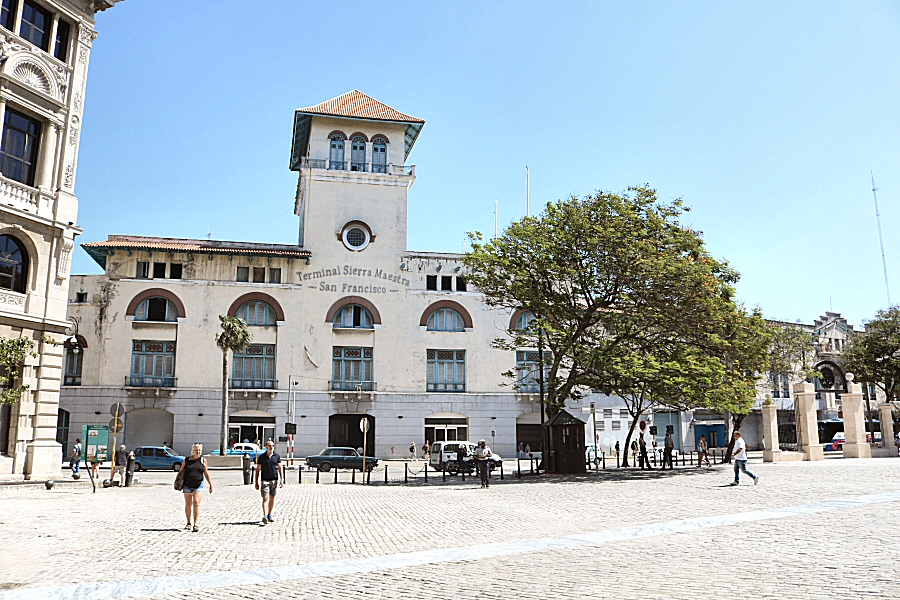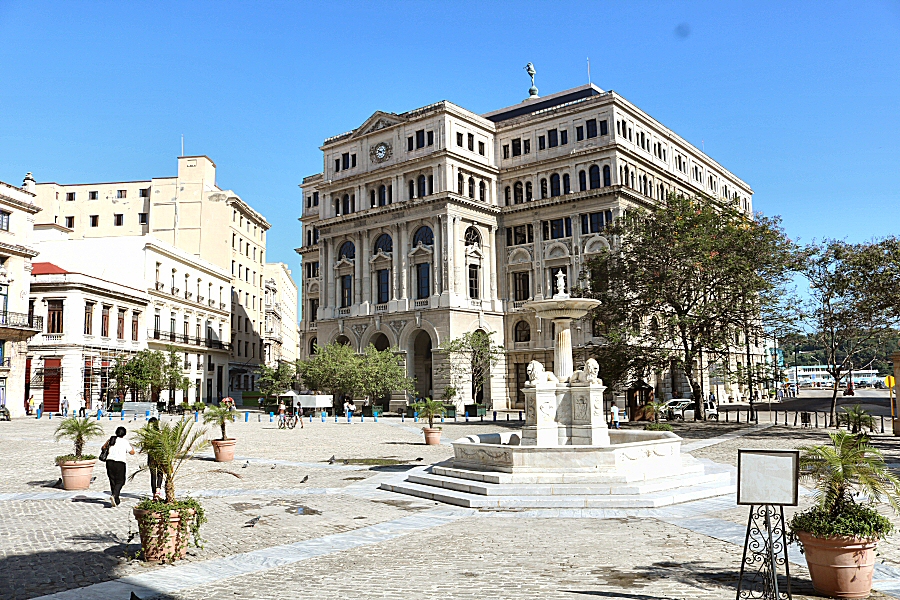On the east side of the Plaza de San Francisico stands the
buildings of the Terminal Sierra Maestra and the Aduana
(Customs House), separated from the square by the Avenida
del Puerto.

The plaza is separated from the Avenida del Puerto by iron
fence and an iron gate, the Pórtico de la Plaza San
Francisco. The portico was part of a system of gates that
limited the commercial area of the Havana port in the 19th
century. It consisted of stone pillars of small size that
carry a cast iron arch with the shield of the town San
Cristóbal de la Habana, adorned with olive laurel leaves at
each side. Although the view of the harbor from the Plaza de
San Francisco is blocked by the Terminal Sierra Maestra and
the Customs House, the plaza didn’t lose anything from its
popularity.
The west part of the square is limited by the Oficios
street. Two buildings at the Oficios street, looking to the
plaza, should be mentioned: the gallery of the Venezuelan
painter Carmen Montilla and the Palacio del Marqués de San
Felipe y Santiago de Bejucal.
The easily-remembered name of the square was espoused by
inhabitants very much, so that some attempts to change its
name, such as Plaza Fernando VII (twice King of Spain in the
early 19th century) and Plaza Key West (named by the mayor
of Havana in honor of the Cuban freedom fighters based in
Florida in 1947) were not successful.
The Plaza de San Francisco is entirely pedestrianised today.
The Restaurante Café del Oriente at the southwest corner of
the square and the Café Mercurio in front of the Lonja del
Comercio are ideal places to enjoy the square that underwent
several renovations, but a certain feature of the square
didn’t change to be the refuge for the swarm of pigeons.
Therefore, some habaneros prefer to call the square the
Plaza de las Palomas (The Pigeons Square). On the other
hand, the square is an ideal place for the girls that
celebrate their 15th birthday (fiesta de quince). This
tradition still continues, so that you are likely to see at
least one group of girls at this age, arranged in four or
five, sitting around the fountain and posing for the camera
by feeding the pigeons.
Horse-drawn carriages are available on the street in front
of the square for city tours.




